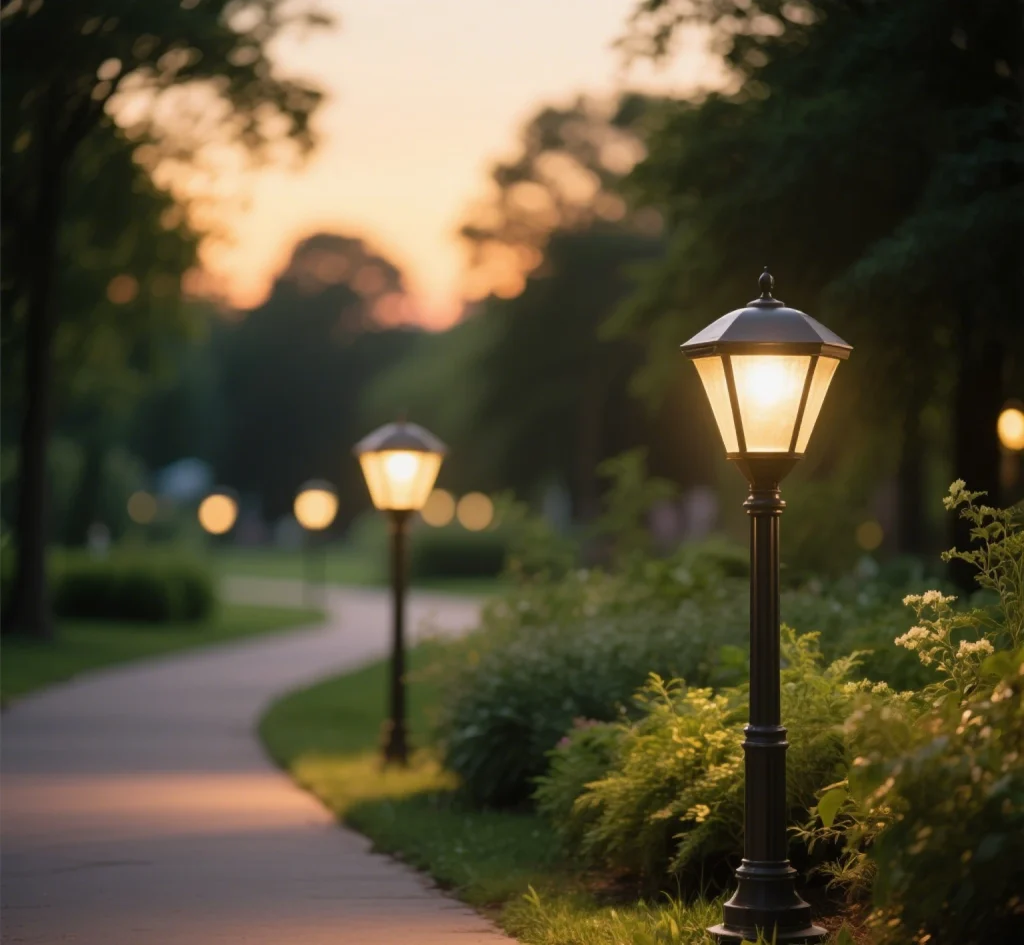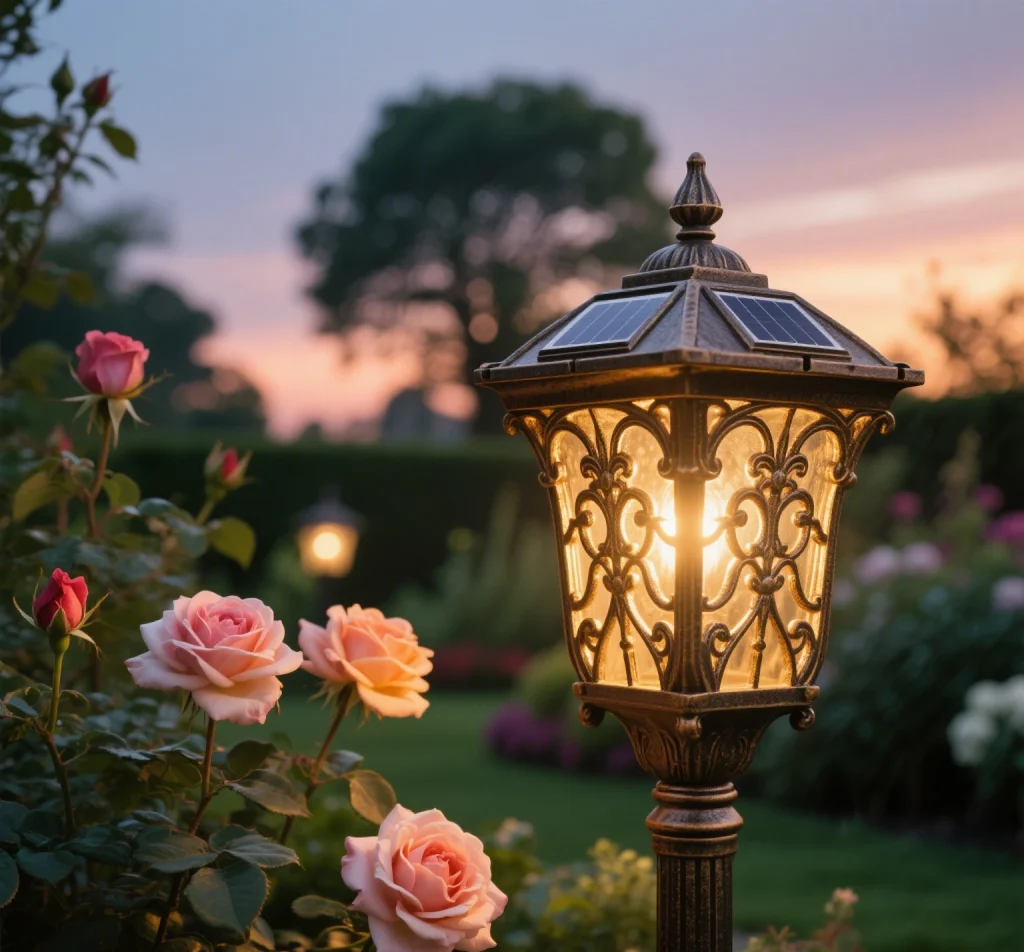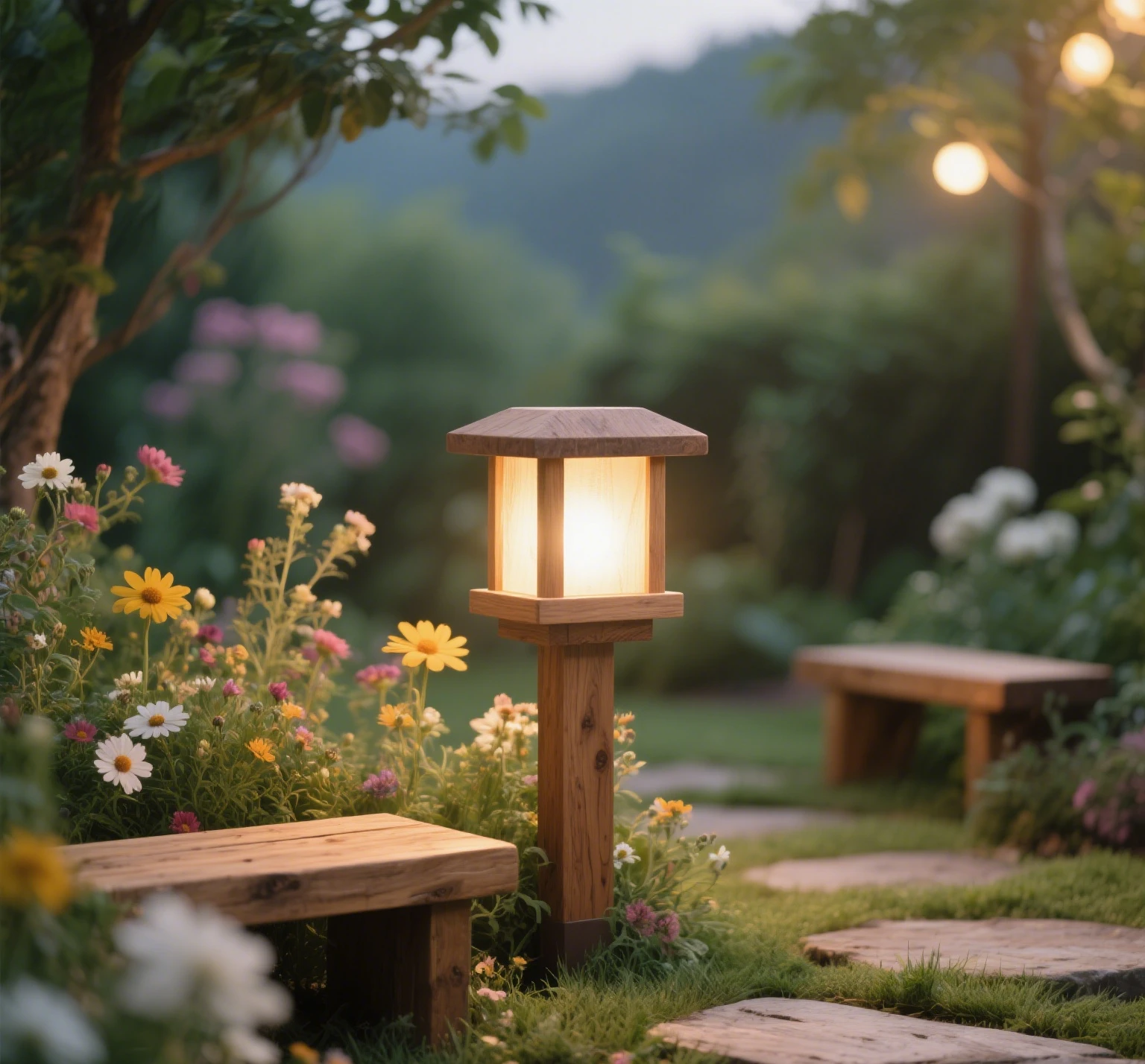Solar light garden decorations have become a popular choice for homeowners seeking eco-friendly, cost-effective, and aesthetically pleasing outdoor lighting solutions. These innovative devices harness the power of the sun to illuminate gardens, pathways, and patios, offering a sustainable alternative to traditional grid-powered lights. In this article, we’ll explore the technical principles behind solar garden lights, including how solar panels convert sunlight into energy, the role of batteries, and the functionality of motion sensors and dusk-to-dawn settings. We’ll also address common questions about their performance in different weather conditions, providing a comprehensive guide to understanding these remarkable devices.

The Science Behind Solar Garden Lights
At the heart of every solar garden light is a simple yet ingenious system that converts sunlight into electricity. This process relies on three key components: the solar panel, the battery, and the control system. Together, these elements work seamlessly to provide reliable illumination without the need for external power sources.
How Solar Panels Convert Sunlight into Energy
Solar panels, also known as photovoltaic (PV) panels, are the cornerstone of solar-powered lighting. These panels are made up of solar cells, typically constructed from semiconductor materials like silicon. When sunlight strikes the solar cells, it excites electrons, creating an electric current through the photovoltaic effect. This phenomenon, discovered over a century ago, allows solar panels to generate direct current (DC) electricity from sunlight.
During daylight hours, the solar panel absorbs sunlight and converts it into electrical energy. The efficiency of this conversion depends on the type of solar cell used—monocrystalline, polycrystalline, or thin-film—each offering different levels of efficiency and cost. Monocrystalline solar panels, for instance, are highly efficient due to their single-crystal structure, making them ideal for compact garden lights where space is limited.
The electricity generated is then directed to a rechargeable battery for storage, ensuring the light can function at night or during periods of low sunlight. This process is entirely renewable, producing no greenhouse gas emissions, which makes solar garden lights an environmentally friendly choice.
The Role of Batteries in Solar Garden Lights
The battery is the unsung hero of solar-powered lighting, storing the energy captured by the solar panel for later use. Most solar garden lights use rechargeable lithium-ion or nickel-metal hydride (NiMH) batteries due to their high energy density and long lifespan. During the day, the solar panel charges the battery, which then powers the LED lights after sunset.
The capacity of the battery, measured in milliampere-hours (mAh), determines how long the light can operate on a single charge. For example, a solar garden light with a 1200mAh battery might provide illumination for 6-8 hours at full brightness, depending on the power consumption of the LEDs. Some advanced models include smart battery management systems that optimize charging and discharging to extend battery life and improve energy efficiency.
Motion Sensors and Dusk-to-Dawn Functionality
Many solar garden lights come equipped with motion sensors or dusk-to-dawn settings to enhance functionality and conserve energy. These features make the lights more versatile and user-friendly, catering to a variety of outdoor lighting needs.
Motion Sensors
Motion sensors, often based on passive infrared (PIR) technology, detect heat signatures from moving objects, such as people or animals. When motion is detected within the sensor’s range—typically 1 to 6 meters, depending on the model—the light activates or increases in brightness. This is particularly useful for security lighting or illuminating pathways only when needed, which helps preserve battery life. For optimal performance, the motion sensor should face the direction of expected movement, as its sensitivity decreases at angles or when obstructed by materials like glass.
Dusk-to-Dawn Settings
Dusk-to-dawn settings allow solar garden lights to automatically turn on at sunset and off at sunrise, using a light sensor (often integrated into the solar panel) to detect ambient light levels. This feature ensures the lights operate only when necessary, maximizing energy efficiency. Some models combine dusk-to-dawn functionality with motion sensors, activating at low brightness at dusk and switching to full brightness when motion is detected.
These control systems, which may include light sensors, timers, or microcontrollers, are typically housed on a small PCB (printed circuit board) within the light. Advanced models may use chips like the AY10W01 to manage power distribution and control settings, ensuring seamless operation.

Performance in Different Weather Conditions
One of the most common questions about solar garden lights is how they perform in different weather conditions. While these lights are designed to be resilient, their performance can vary based on sunlight availability, temperature, and environmental factors.
Sunny Conditions
In sunny weather, solar garden lights operate at peak efficiency. A well-positioned solar panel can fully charge the battery in as little as 1.8 hours for a 20W panel paired with a 10Ah battery, assuming optimal sunlight exposure. To maximize charging, the solar panel should face the sun directly, avoiding shade from trees or buildings.
Cloudy or Rainy Weather
Cloudy weather or rainy conditions can reduce the amount of sunlight available, impacting charging efficiency. For example, in overcast conditions, a solar panel might produce only 10-20% of its rated power, requiring longer charging times or reducing the light’s runtime. To mitigate this, high-quality solar garden lights often use monocrystalline solar panels for better low-light performance and larger batteries to store extra energy for prolonged cloudy periods. In regions with frequent rainy weather, such as parts of Sichuan, choosing a light with a high-capacity battery (e.g., 5000mAh or more) and a solar panel rated at 20W or higher can ensure reliable performance.
Cold Weather
Cold temperatures can affect battery performance, as lithium-ion and NiMH batteries lose efficiency in extreme cold. However, most solar garden lights are designed to operate within a temperature range of -10°C to 50°C, making them suitable for most climates. In colder regions, selecting lights with insulated battery compartments or temperature-compensated charging systems can improve performance.
Snow and Dust
In snowy or dusty environments, solar panels may become covered, reducing their ability to capture sunlight. Regular cleaning and choosing lights with tilted solar panels to prevent accumulation can help maintain efficiency. Additionally, waterproof solar lights with an IP65 or higher rating are recommended for areas prone to heavy rain or snow, ensuring durability and consistent performance.
Advantages of Solar Garden Lights
Solar garden lights offer numerous benefits that make them an attractive choice for homeowners. Their eco-friendly design eliminates the need for grid electricity, reducing carbon emissions and energy costs. Installation is straightforward, as they require no wiring, making them ideal for DIY garden projects. Their versatility, with features like motion sensors and dusk-to-dawn settings, allows them to serve as decorative lighting, security lighting, or pathway lighting.
Moreover, solar garden lights are highly customizable. Models like those from Bitpott offer adjustable lamp poles made from high-strength ABS plastic, allowing users to modify the height and placement to suit their garden’s aesthetic. The use of LED lights ensures bright, long-lasting illumination, with some models boasting up to 30 LEDs for enhanced brightness.
Common Misconceptions and Considerations
Despite their advantages, solar garden lights are not without challenges. One common misconception is that they can produce high wattage (e.g., 2000W) comparable to traditional lights. In reality, most solar garden lights operate at 10-20W, sufficient for decorative purposes but not for heavy-duty lighting. Consumers should be wary of exaggerated power ratings and verify specifications like battery capacity and solar panel wattage before purchasing.
Another consideration is the environmental impact of solar panel production, which involves energy-intensive processes and potentially toxic chemicals. However, advancements in manufacturing, such as using solar energy to power production facilities, are reducing this footprint. Proper recycling of batteries and solar panels is also critical to minimize environmental harm.
Choosing the Right Solar Garden Light
When selecting a solar garden light, consider the following factors:
- Solar Panel Type: Opt for monocrystalline panels for higher efficiency in limited spaces.
- Battery Capacity: Choose a battery with sufficient mAh to meet your lighting needs, especially in regions with cloudy weather.
- Sensor Features: Decide whether you need motion sensors, dusk-to-dawn settings, or both a combination for versatility.
- Durability: Look for waterproof solar lights with an IP65 rating or higher for longevity.
- Brand Reliability: Reputable brands like Bitpott often provide better quality and performance guarantees.
Conclusion
Solar garden lights combine cutting-edge solar technology with practical features like motion sensors and dusk-to-dawn settings to offer an eco-friendly lighting solution for outdoor spaces. By harnessing the photovoltaic effect, these lights convert sunlight into stored energy, providing reliable illumination even in different weather conditions. Whether you’re enhancing your garden’s ambiance, securing your property, or lighting a pathway, solar garden lights provide a sustainable, cost-effective, and versatile option. By understanding their technical principles and selecting high-quality components, you can enjoy the benefits of solar-powered lighting for years to come.


Leave a Reply